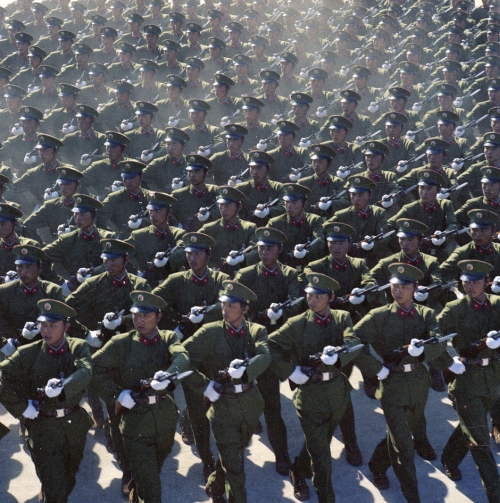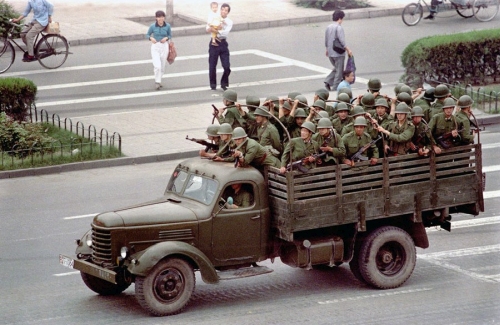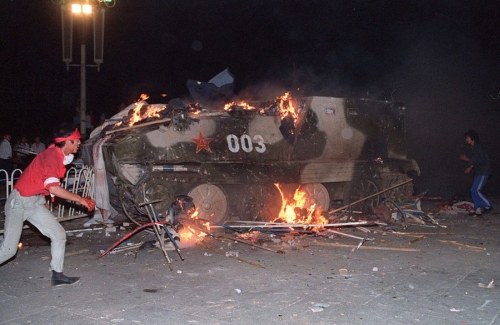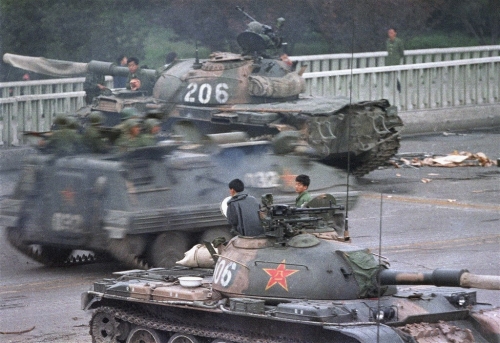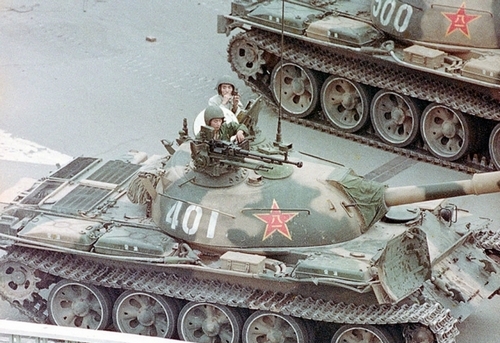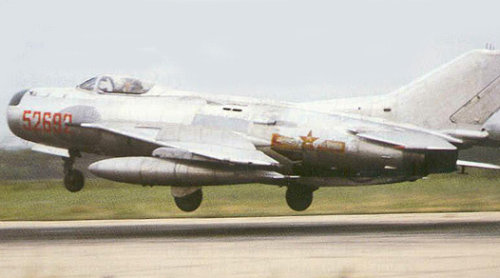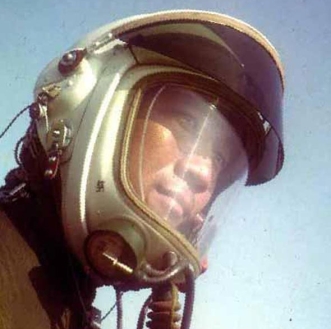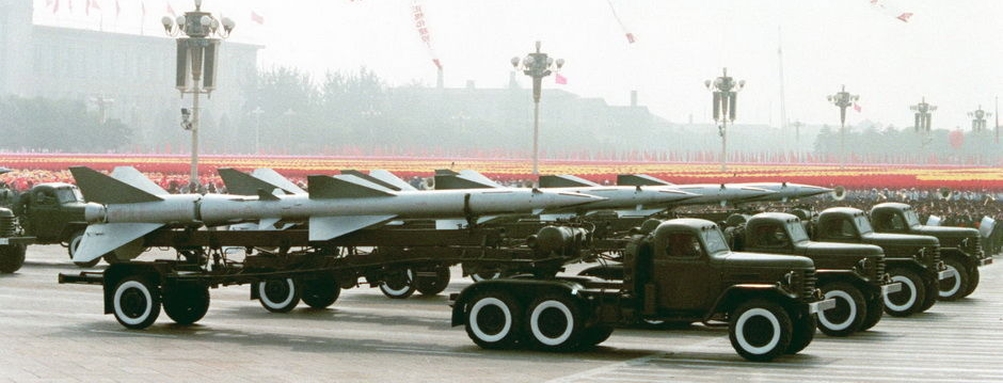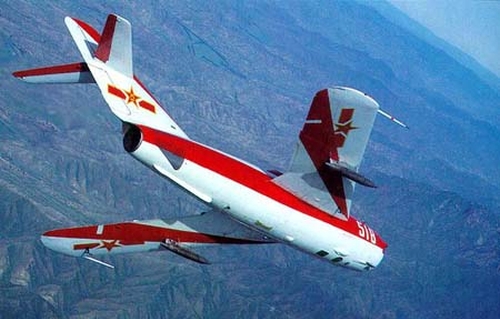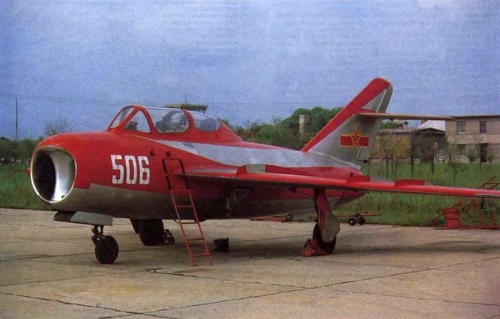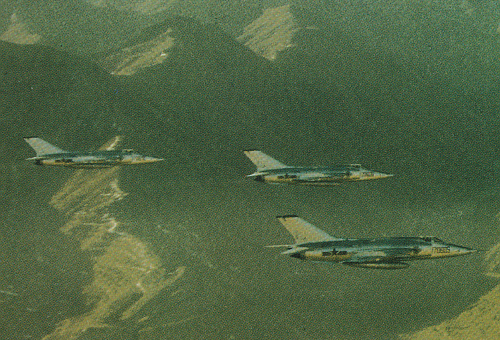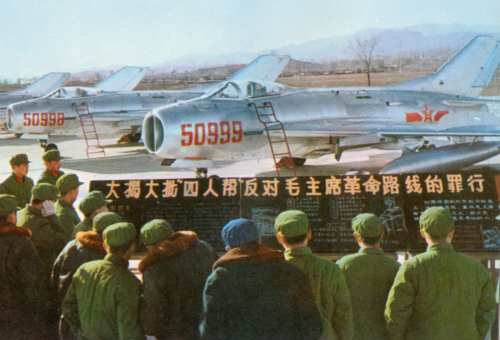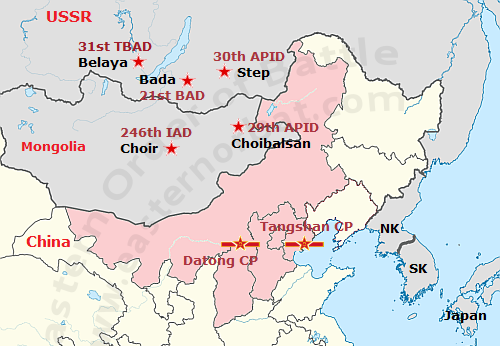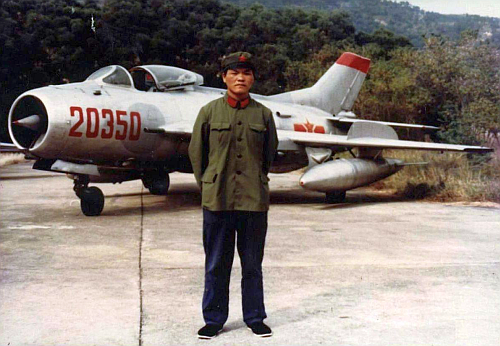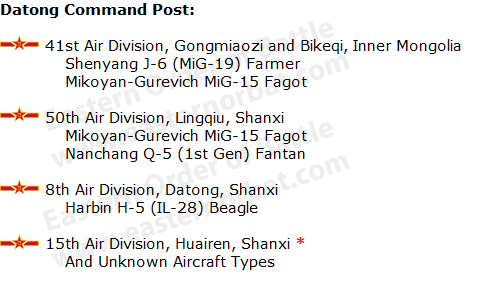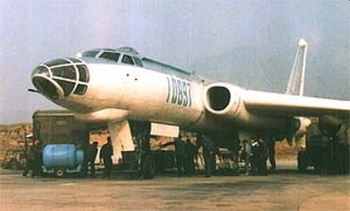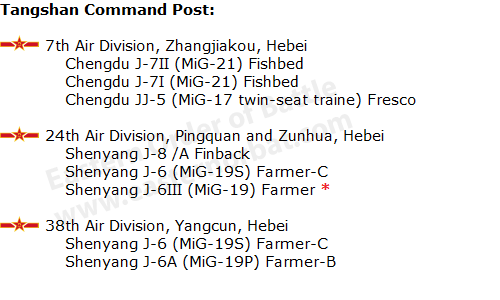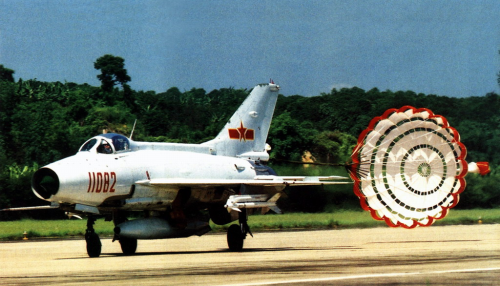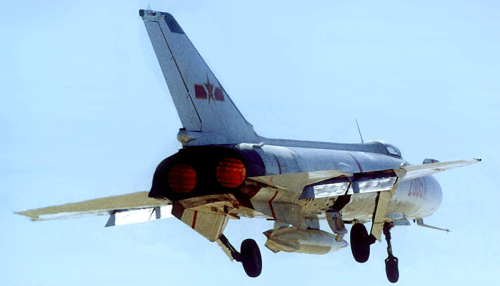|
|
 |
 |
|
|
 |
 |
|
The Beijing Military Region's Air Force Headquarters was formed in October 1950. In June 1957, the Beijing MR Air Force and Beijing MR Air Defense Force were merged into a combined air defense system, covering Hebei, Shanxi, Neimenggu (Inner Mongolia), Beijing, and Tianjin provinces. After the Sino-Soviet split, the Beijing MR Air Force contained three Air Corps:
- the 6th Air Corps was re-established in Tangshan, Hebei province, in December 1968
- the 10th Air Corps was established in January 1969 at Datong, Shanxi province
- the 13th Air Corps was created in Shijiazhuang, Hebei province, in August 1970
In 1976, three air Corps were converted into two Command Post (Datong and Tangshan), subordinated to nine air divisions.
|
 |
 |
|
After the Sino-Soviet relationship deteriorated, the Soviet Tactical Air Force deployed one fighter, and three fighter-bomber air division to Mongolia and the Transbaikal Military District.
The Soviet MiG-21bis ‘Fishbed-L’ and MiG-23M/MLA ‘Flogger-B/G’ tactical fighter types were a very modern aircraft over the Inner Mongolia region in the seventies and eighties. The leaders of the Soviets looked down on the Chinese Air Force. Only 20% of the VVS aircraft was fighter aircraft. In comparison, in east Germany, 50% of the VVS was fighter aircraft at the same time. According to the leaders of the Soviets, the Su-17 ‘Fitter’ fighter-bomber type is equal in the air to air combat with the Chinese MiG-19 ‘Farmer’ type.
|
 |
 |
|
In the early eighties, three Chinese air divisions of the Tangshan Command Post was deployed near the Beijing capital town. Three fighter air divisions (7th, 24th and 38th air division) defended the capital city in the daytime with Shenyang J-6III (MiG-19) 'Farmer', Chengdu J-7I (MiG-21) 'Fishbed-C' and new Shenyang J-8 Finback high-performance interceptors fighter aircraft, and at night they used the Shenyang J-6A (MiG-19P) 'Farmer-B' and Shenyang J-5A (MiG-17PF) Fresco-D night fighter version. And a lot of HQ-1/2 'SA-2 Guideline' anti-aircraft missiles unit settled around the Beijing.
Combat fighter and bomber air units of
the Beijing Military Region's Air Force in the early eighties:
|
 |
 |
|
The Datong Command Post’s four tactical bomber and attack air divisions (8th, 15th, 41st, and 50th air divisions) among other things flew with Nanchang Q-5 (1st Gen) 'Fantan' attack aircraft and Harbin H-5 (IL-28) 'Beagle' bomber aircraft type in the early eighties.
They were given tactical tasks facing the Soviet forces. At its northernmost, the 41st Air Division settled in the Inner-Mongolia, near the Sino-Soviet border with Shenyang J-6 (MiG-19) ‘Farmer’ tactical fighter and Soviet-made older Mikoyan-Gurevich MiG-15 ‘Fagot’ trainer/attack aircraft types in the early eighties.
|
|
|
 |
 |
|
In 1985 the Chinese leaders were restructuring the Chinese Air Forces. They withdraw the older MiG-15 ‘Fagot’, MiG-17 ‘Fresco’ and IL-28 ‘Beagle’ aircraft types from combat use. Several air divisions were merged or transformed.
On the Datong Command Post, the 41st and the 15th air division, the 50th and the 8th air division merged in 1985. The 41st and the 50th air divisions disbanded.
From 1985 the 8th Air Division used Nanchang Q-5 (1st Gen) 'Fantan' attack aircraft and received a regiment with Xian H-6 (Tupolev Tu-16) 'Badger' heavy bomber aircraft type.
|
|
 |
 |
|
Combat fighter and bomber air units of
the Beijing Military Region's Air Force in the late eighties:
|
 |
 |
|
The Tangshan Command Post received two new fighter types in the eighties. In the late seventies and the early eighties, the Soviet Tactical and the Long-Range Aviation forces deployed modern Sukhoi Su-24 'Fencer' and Tupolev Tu-22M2 'Backfire' supersonic, all-weather bomber aircraft to the Chinese border. The Chinese Air Force needed modern weapons, so the Chinese 7th and the 24th Air Divisions received new Chengdu J-7II (MiG-21) ‘Fishbed’ and Shenyang J-8A ‘Finback’ interceptors type in the eighties.
Later the 17th Air Division were transformed into a Training Base in 1988. And a lot of new HQ-2 'SA-2 Guideline' anti-aircraft missiles unit defended too the China's capital town Beijing.
|
|


